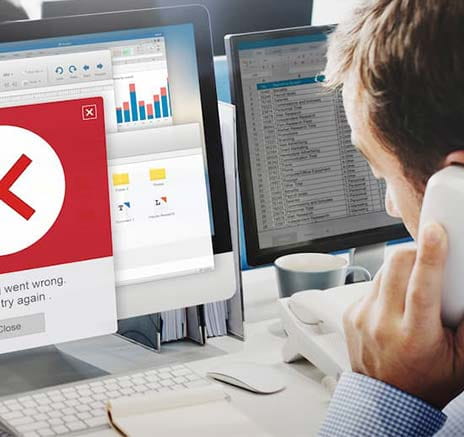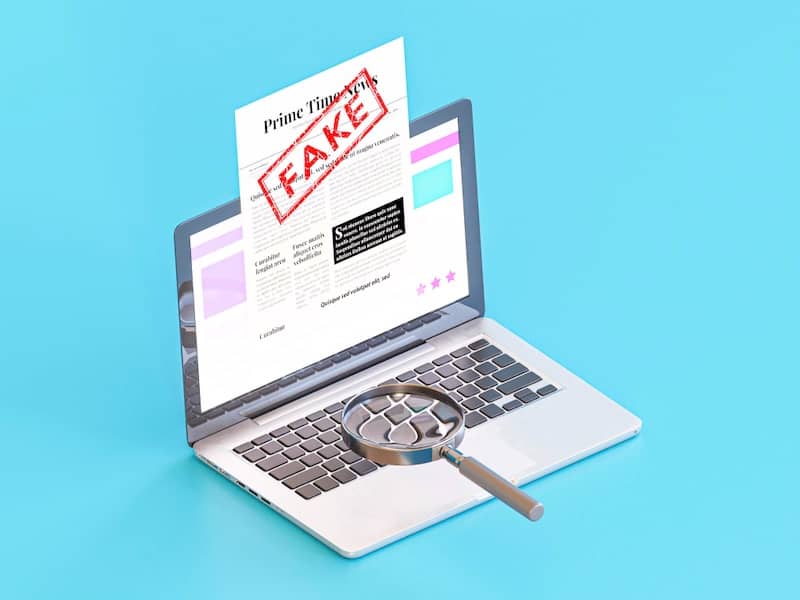While the phrase ‘imitation is the sincerest form of flattery’ may be true in some cases, when it comes to websites and online branding, imitation is far from flattering and can ultimately have damaging effects on your brand.
Unfortunately, fake products have been around for years. Whether designer handbags, sunglasses, or even professional ball cards, imitators want a piece of the success you have worked so hard to build. The impact can be devastating when a scammer attempts to steal your brand identity. But you can fight back when you know how to spot fake websites and minimize the damage.
How to Spot Fake Websites
Fake websites frequently share similar characteristics, making them easy to identify if you know what to look for.
- Suspicious URLs—When you look at a website’s URL and domain name, you can often tell if it’s real or fake. Fake websites might try to trick you by using a misspelled version of a well-known website, adding extra hyphens, or using unusual endings. By paying attention to the details in the URL, you can spot things that don’t match up, helping you figure out if the website is the brand it says it is.
- No Contact Information—Real websites usually make it easy for people to contact them. They’ll have options like a phone number, email, or even a physical address listed. However, fake websites often leave out these important details. If you can’t find a way to contact the site, it’s a red flag that the website might not be what it claims to be.
- Poor Design—Fake websites usually look unprofessional and poorly made. You might notice blurry pictures, strange fonts, or messy designs. These problems show that the website was thrown together quickly, probably to trick people rather than offer customers an authentic, credible experience.
How to Respond to Fake Websites
- Preventative Strategies
- Use Official Communication Channels—Your business must have clear ways for customers to contact you. Having verified social media pages (with a blue check), an official website, and customer support channels helps people know they’re dealing with the real brand. These safeguards build trust and help customers spot fake information online.
- Monitor Your Online Presence— Use brand monitoring software or brand reputation management services to track mentions in the news and media. Tracking your online presence keeps you updated on what people say about your brand and allows you to stay on alert if any copycat brands emerge.
- Defensive Strategies
- Work with the Hosting Platform—Report the fake website to the platform and ask them to remove it to minimize the potential harm to your reputation.
- Issue an Official Response—Issuing a press release or an official statement is an effective way to get your story out there. Share this statement on social media platforms and your blog to correct misinformation.
- Legal Strategies
- Report to Cybercrime Agencies—Report fake websites to the authorities so they can take proper legal action against the scammers.
- File a Trademark Infringement Lawsuit—One way to protect your brand from fake websites is to take legal action for trademark infringement. This means suing the people who used your brand’s name, logo, or other protected content without permission in order to trick your customers.
Ramifications For Your Brand
- Loss of Trust—Fake websites can seriously damage people’s trust in a brand. Today, people are more careful about where they shop and who they trust online, so finding a fake site can make them second-guess everything they see.
Customers may wonder if the real brand is safe and start doubting the products, services, and messages they receive. Once trust is lost, it’s hard to get it back. This loss of confidence can lead to fewer return customers, and the brand might even lose its good reputation. - Financial Fallout—Fake websites harm a brand’s reputation and bottom line. When customers buy from these sites, they might not get what they expected, which leads to frustration. This disappointment often means more returns, refunds, and negative reviews, costing the brand money. On top of that, there could be legal problems if the fake site breaks any rules.
- Spread of False Information—Fake websites copy real brands and trick people into believing false information. These tactics could include made-up product details, fake reviews, or faulty company information to fool customers.
Today, people use the internet to make decisions, and when fake sites spread lies, it hurts customers’ trust in the real brand. This lack of confidence makes it hard for the brand to fix its image.
For example, imagine a fake site posting a promotion online that all shoes are 50% off this weekend. Even though the phony site made up the deal, customers might still expect the real brand to honor it, arguing that it’s not their fault the fake website tricked them. - Disappearing Leads—A fake website can prevent potential customers from visiting the real website. When these people get frustrated with the fake site, they might give up on the brand altogether, resulting in a loss of leads entering the actual website’s sales funnel.
- Negative Feedback—When a fake website tricks customers, they may leave negative reviews because they didn’t get what they expected. These bad reviews can hurt the brand’s reputation, making others think the actual site isn’t trustworthy. After that happens, it can be challenging for the brand to fix its image.
Conclusion
Whether you need someone to clean up your online reputation after your online identity was compromised or you want to prevent scammers from stealing your identity in the future, working with an online reputation management agency can help protect your brand and give you peace of mind.
Infographic
While “imitation is the sincerest form of flattery” in some cases, it can be damaging to your brand when it comes to websites and online branding. Scammers stealing your brand identity can lead to serious consequences. Check out this infographic to uncover the hidden risks of fake websites.






